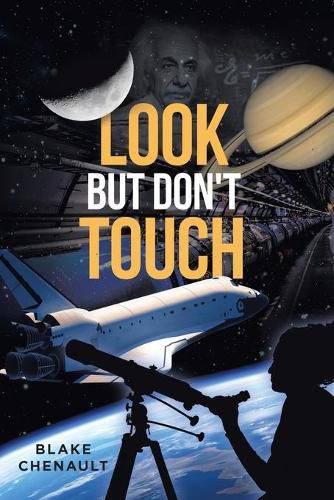Readings Newsletter
Become a Readings Member to make your shopping experience even easier.
Sign in or sign up for free!
You’re not far away from qualifying for FREE standard shipping within Australia
You’ve qualified for FREE standard shipping within Australia
The cart is loading…






This title is printed to order. This book may have been self-published. If so, we cannot guarantee the quality of the content. In the main most books will have gone through the editing process however some may not. We therefore suggest that you be aware of this before ordering this book. If in doubt check either the author or publisher’s details as we are unable to accept any returns unless they are faulty. Please contact us if you have any questions.
The book takes a hard look at the current state of astronomy and details why scientists only understand 4 percent of the universe. The work also examines the intriguing paradox of why there is no proof of alien life when there are billions of planets. The search for life beyond Earth has taken a U-turn, no longer looking exclusively into outer space, but into inner space as well, looking at particles too small to see, to explain where life came from. The focus is on something called infinite density. Just as the universe expanded infinitely outward, it can also expand infinitely inward. Scientists don’t understand the process because math and physics break down. So they built the largest most complicated machine ever constructed to better understand what they cannot see. Much is expected from the Large Hadron Collider, a seventeen-mile long underground laboratory that would fit perfectly in a James Bond Movie.
This volume also reviews the invention and evolution of the instrument that has told scientists more about the universe than anything else: the telescope is an unparalleled invention. Scientists have used it for the last four hundred years to search for alien life and to learn about places humans could never go. It was discovered by accident after curious children played with a set of glass lenses centuries ago. Since then, the telescope has enriched science; and after a certain comet impact, the telescope has the proven ability to actually save humanity.
The body of work will also review asteroids, why they can strike without warning, including the asteroid that threatens on Friday the 13th and when NASA expects the big one to hit. Orbital debris called one of the biggest problems you never heard of will also be detailed. It is the result of humanity’s search for alien life, but has left Earth’s orbit so clogged with thousands of pieces of debris that they impede space flights, and threaten communications. These stories and more were compiled by B. E. Chenault, a former news reporter for the last twenty-five years, who now spends his time writing about areas of special interest.
$9.00 standard shipping within Australia
FREE standard shipping within Australia for orders over $100.00
Express & International shipping calculated at checkout
This title is printed to order. This book may have been self-published. If so, we cannot guarantee the quality of the content. In the main most books will have gone through the editing process however some may not. We therefore suggest that you be aware of this before ordering this book. If in doubt check either the author or publisher’s details as we are unable to accept any returns unless they are faulty. Please contact us if you have any questions.
The book takes a hard look at the current state of astronomy and details why scientists only understand 4 percent of the universe. The work also examines the intriguing paradox of why there is no proof of alien life when there are billions of planets. The search for life beyond Earth has taken a U-turn, no longer looking exclusively into outer space, but into inner space as well, looking at particles too small to see, to explain where life came from. The focus is on something called infinite density. Just as the universe expanded infinitely outward, it can also expand infinitely inward. Scientists don’t understand the process because math and physics break down. So they built the largest most complicated machine ever constructed to better understand what they cannot see. Much is expected from the Large Hadron Collider, a seventeen-mile long underground laboratory that would fit perfectly in a James Bond Movie.
This volume also reviews the invention and evolution of the instrument that has told scientists more about the universe than anything else: the telescope is an unparalleled invention. Scientists have used it for the last four hundred years to search for alien life and to learn about places humans could never go. It was discovered by accident after curious children played with a set of glass lenses centuries ago. Since then, the telescope has enriched science; and after a certain comet impact, the telescope has the proven ability to actually save humanity.
The body of work will also review asteroids, why they can strike without warning, including the asteroid that threatens on Friday the 13th and when NASA expects the big one to hit. Orbital debris called one of the biggest problems you never heard of will also be detailed. It is the result of humanity’s search for alien life, but has left Earth’s orbit so clogged with thousands of pieces of debris that they impede space flights, and threaten communications. These stories and more were compiled by B. E. Chenault, a former news reporter for the last twenty-five years, who now spends his time writing about areas of special interest.